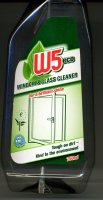Ray Westfield
Printing Ninja
- Joined
- Jan 29, 2019
- Messages
- 65
- Reaction score
- 185
- Points
- 82
- Location
- Norfolk UK
- Printer Model
- Canon pro 100 S
Have been using WINDEX but its not cheap. Think I read on here somewhere that LIDL W5 glass and window cleaner is the same? Can anyone verify? This stuff is only 75p as against 7.99 on Amazon.


